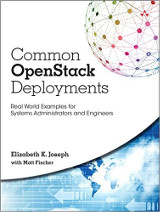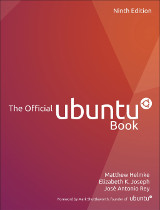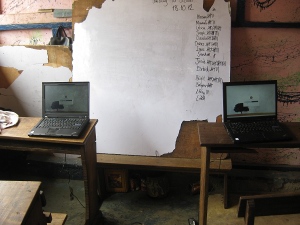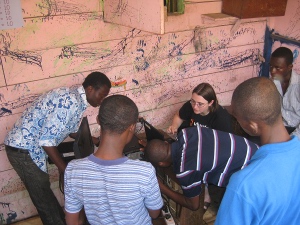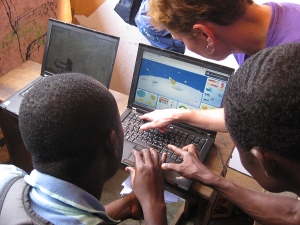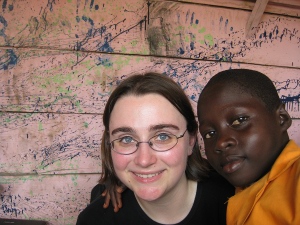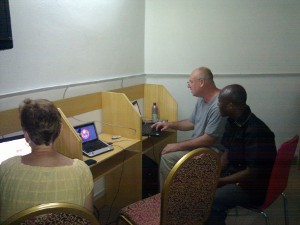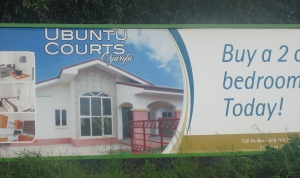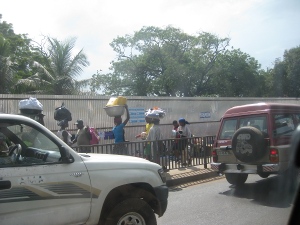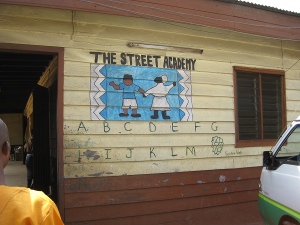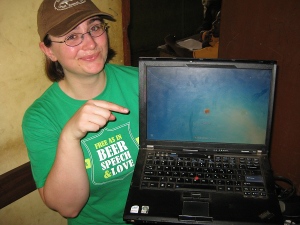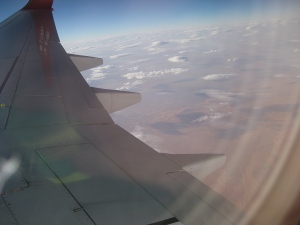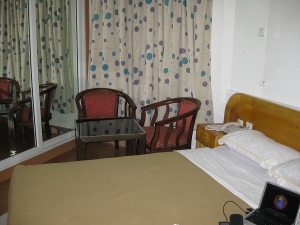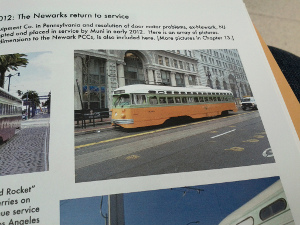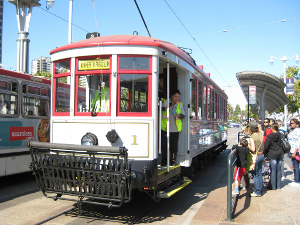Today was our journey to the town of Ho. We met up with Daniel at the station around 8:30. The station was a confusing series of “tro-tros” – 12 seat vans that will take people all over the place, from around the city to around the country. Fortunately Daniel could easily navigate the chaos and bought us tickets on an air-conditioned one heading to Ho within about 10 minutes.
It perhaps goes without saying that that having air-conditioning on a tro-tro is not like having air-conditioning in a new personal car. With 12 people packed into a hot van, our weekend luggage piled on our laps and a 3 hour ride the air-conditioning merely made the journey tolerable, I was pretty sweaty and tired by the end of our journey. It was a beautiful journey though, leaving the insanity that is the capital city of Accra and finally getting to see the amazing, tropical countryside. I also got to enjoy the novelty of reading a paper book I brought along precisely for situations like these. It’s also noteworthy that during this whole trip to Ho I had data on my phone – often even 3G. The wireless network here is what people depend upon for all their phones and they don’t have the infrastructure in the vast majority of the country for anything but cellular-based internet access, so all the carriers have a better network than most rural areas of the United States. Of course at the hotel here I’m doomed to Edge, my phone really doesn’t like the hotels I’m staying at.
I, however, do like the hotels we’re staying at. This Chances Hotel actually ended up to be quite a nice spot to kick back at for the weekend, in spite of the internet access they advertised not working (at least tonight). It was raining when we arrived so we were able to enjoy this evening basking in the cooler weather, when I looked in the early evening it was a beautiful 77F out! But no time to bask when we arrived this afternoon, we had much to do!
After checking in, we ventured over to the Evangelical Presbyterian Church administrative offices where we met our contact here Lydia Adajawah. She was involved with getting the 5 laptops with Edubuntu deployed here and had arranged our satisfying lunch of chicken, rice and fried plaintains at their establishment. The church runs a series of big schools here in Ho that the laptops were distributed between and we had on our schedule to visit the schools and check in on being used in the classrooms.
It was really nice to meet with several of the administrators and others involved with computer training, the woman doing it with the younger kids certainly was leveraging the power of the laptop to directly teach the children. Unfortunately for 2 of the 3 laptops we were able to visit we discovered that dubious copies of Windows had been installed on them. I have to admit that it made my heart sink to see it, but just like with the ones we found in this condition last week it’s not something we faulted the schools for. These schools have jobs to do and they had a piece of technology they wanted to use but felt couldn’t use it in the form it was in so they did what they needed to do to make it work for them.
Given this situation, we launched into explaining the 3-step plan we’ve been solidifying these past several days:
Information. The tools that come with Edubuntu and the philosophies of open source that have made me fly halfway around the world are not things that are obvious. We explained our mission to the school administrators, why we’re using Edubuntu and don’t support Windows and the benefits that can be delivered to the students with the free educational software we were providing.
Training. Tomorrow morning at 8:30AM we’ve invited several of the teachers from the schools to join us for training. Nancy will be doing a short presentation on the key components from a teaching perspective and then we’ll be sitting down one-on-one like we did at the Street Academy to get them familiar with the desktop and the key tools they can use in their classrooms.
Support. The LUG contacts here in Ghana have been quite the blessing. In addition to Daniel, we now have not only the LUG in Accra itself, but friends of theirs across the country who wish to help with support. There will be coordination moving forward with that network of folks to get the schools the on the ground support they need should any questions or problems arise.
Tonight Beth Lynn ended up randomly running into another Ubuntu user while taking a walk outside the hotel! He came to dinner and he talked about his work as an ITC teacher in a nearby school and the possibility of us getting computers to his school in the future. He’s going to try to come by training tomorrow so he can get the other local Linux users involved in the school (hello support!).
After dinner we headed up to one of the rooms to re-image the 2 laptops with our Edubuntu image. Installfest fun!
Nancy’s post about the day is here: Tro tro to Ho
The weather tonight is nice, but I’m feeling a little queasy. Time to get some rest, training bright and early tomorrow.
